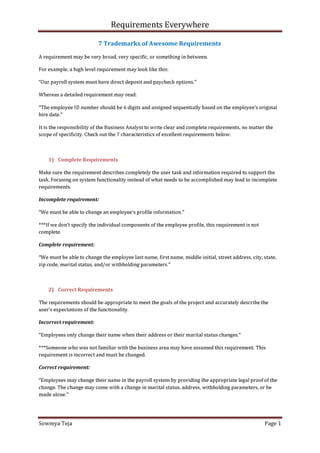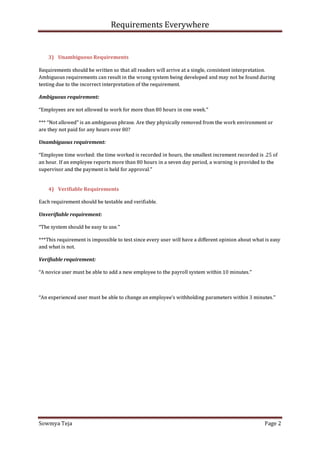The document discusses the characteristics of excellent requirements for software projects. It outlines 7 key traits that requirements should have including being complete, correct, unambiguous, verifiable, necessary, feasible, and prioritized. It also categorizes requirements into business, functional, and technical levels and provides tips for promoting excellent requirements such as developing a clear product vision, stakeholder involvement, and prioritization.






